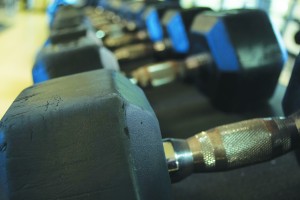
Lately, diet fads and exercise regimens seem to be bursting from Internet sites, television programs and magazine pages. The push to live healthy and to get up and move can be — at least partially — accredited to the massive distribution capabilities of the Internet through both news and social media sites.
Carrie Clyde, wellness coordinator for the Youngstown State University Office of Human Resources, explained how social media has played a huge role in fitness and body image issues.
“I do feel that media has a very strong influence on individuals’ perceptions about body image,” she said. “As a society, we have grown accustomed to worrying too much about how we look rather than how we feel or if we are practicing healthy behaviors.”
JoHaana Morgan, a third year YSU student and Herbalife — a global nutrition company — distributor, discussed how social media impacted her decision to workout.
“The only reason why I got big into fitness is because I saw so many fitness accounts on Instagram,” Morgan said. “That is how I found my Herbalife coach and started my Herbalife journey.”
Morgan also explained that working out has positively impacted her life.
“Working out has played a huge role in my life because it takes up a lot of time and dedication. I workout because I enjoy it — it is just a bonus that it keeps me in shape,” she said.
Though fitness is a popular topic right now, it is hardly a passing fad. Clyde mentioned that there are fitness pages on social media sites regarding everything fitness, from new exercises to healthy meal choices.
Further, there are apps on your phone and tablet that can track health progress.
“Through the years, I think we have become more educated about how to safely and effectively include cardiovascular, strength training and flexibility activities into our exercise routines. The use of technology has really enabled us to better track our progress,” Clyde stated.
While social media influences can increase one’s motivation, it can also lead to unhealthy levels of competitiveness. Carla Moser-Flatley, professor of human performance and exercise science, commented on this issue.
“Anything that brings things out into public eye is a good thing. Social media brings people’s workouts more to the forefront. One person sees what another has done for that day workout-wise, and they are motivated to ‘keep up’ and also workout,” Flatley said. “Along with that is the wanting to be the best or outdo someone else. People post constant selfies of even just their abs or legs or chest, posting pics while working out, doing cardio, spinning etc. If people were self-conscious before about going into a gym … this can only make that worse.”
Nicole Mullins, associate professor of human performance and exercise science, also acknowledged that fitness inspired by social media can be both a good and bad trend.
“This is why I teach in the field in which I teach … to train exercise physiologists to tailor programs to individuals and their specific needs, goals, wants, preferences, abilities and limitations,” she said. “Nothing is good for everyone — and nothing is bad for everyone.”



